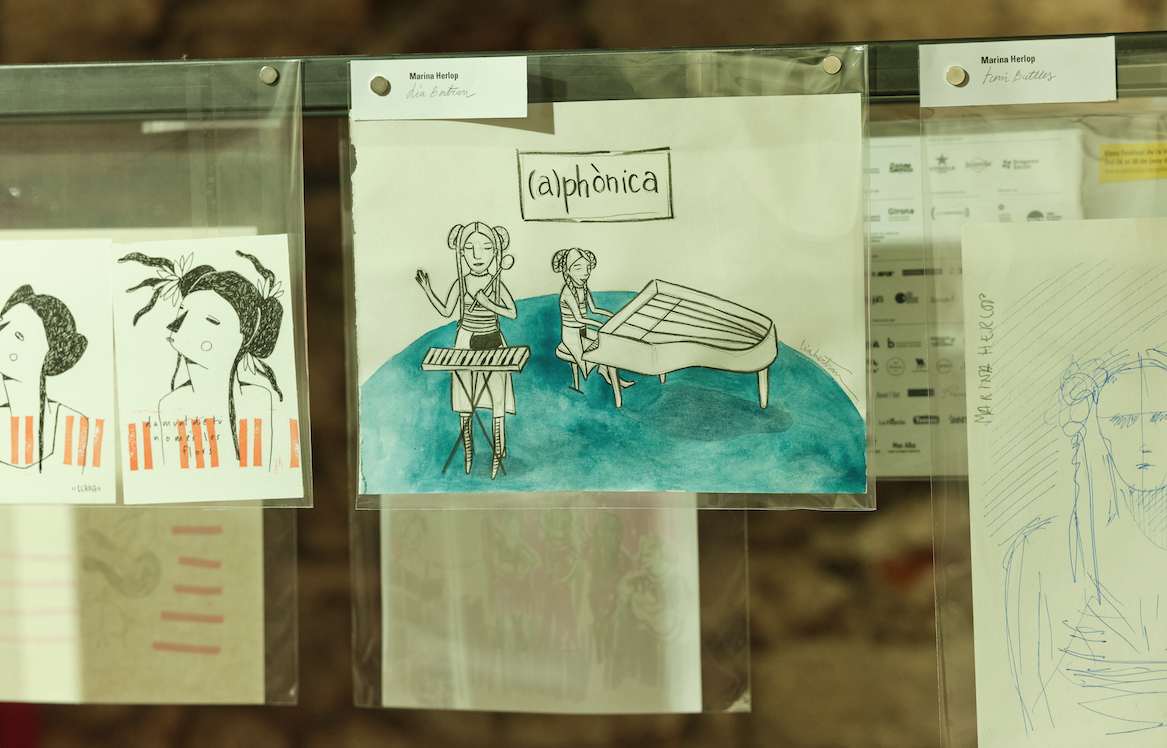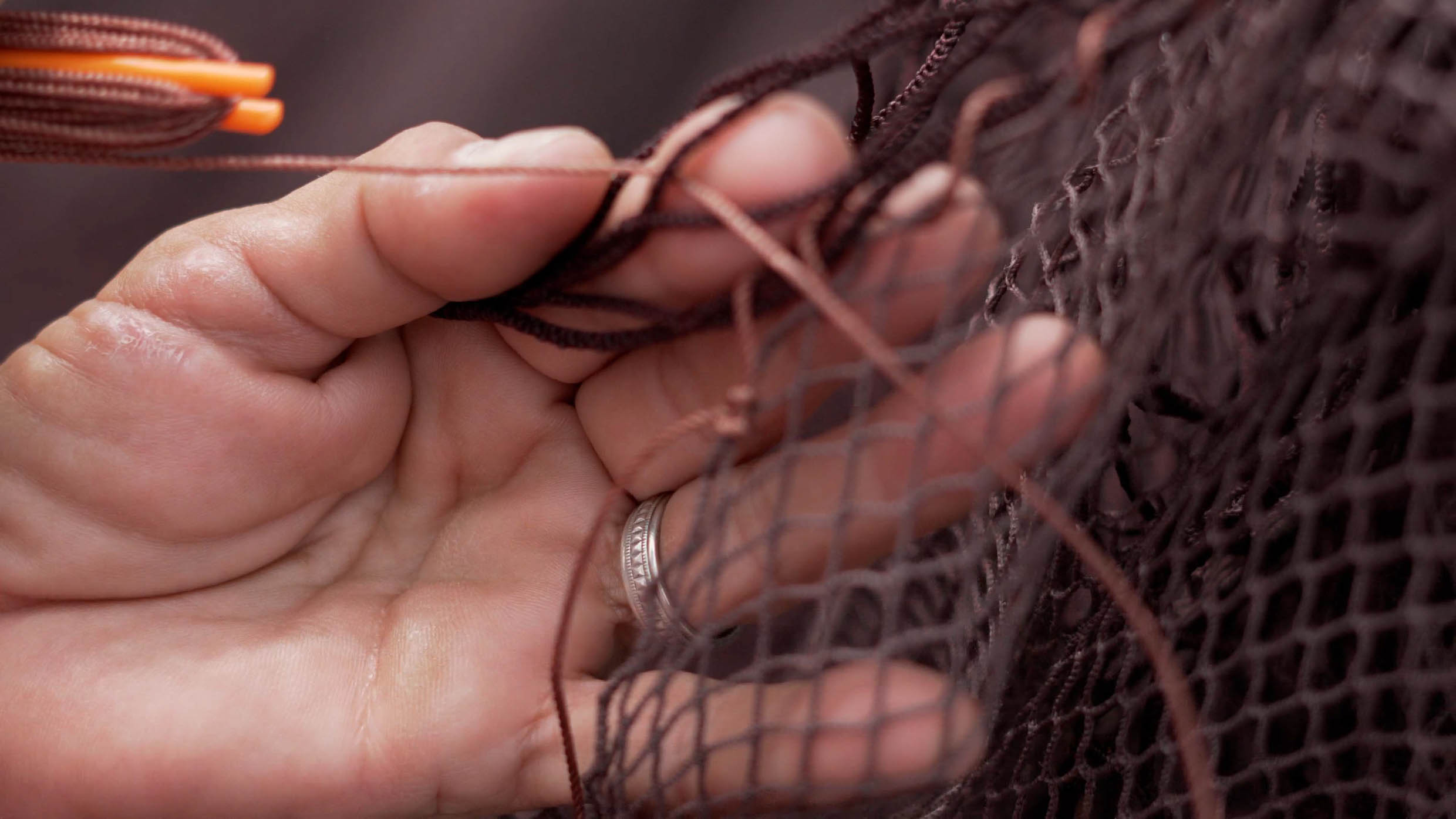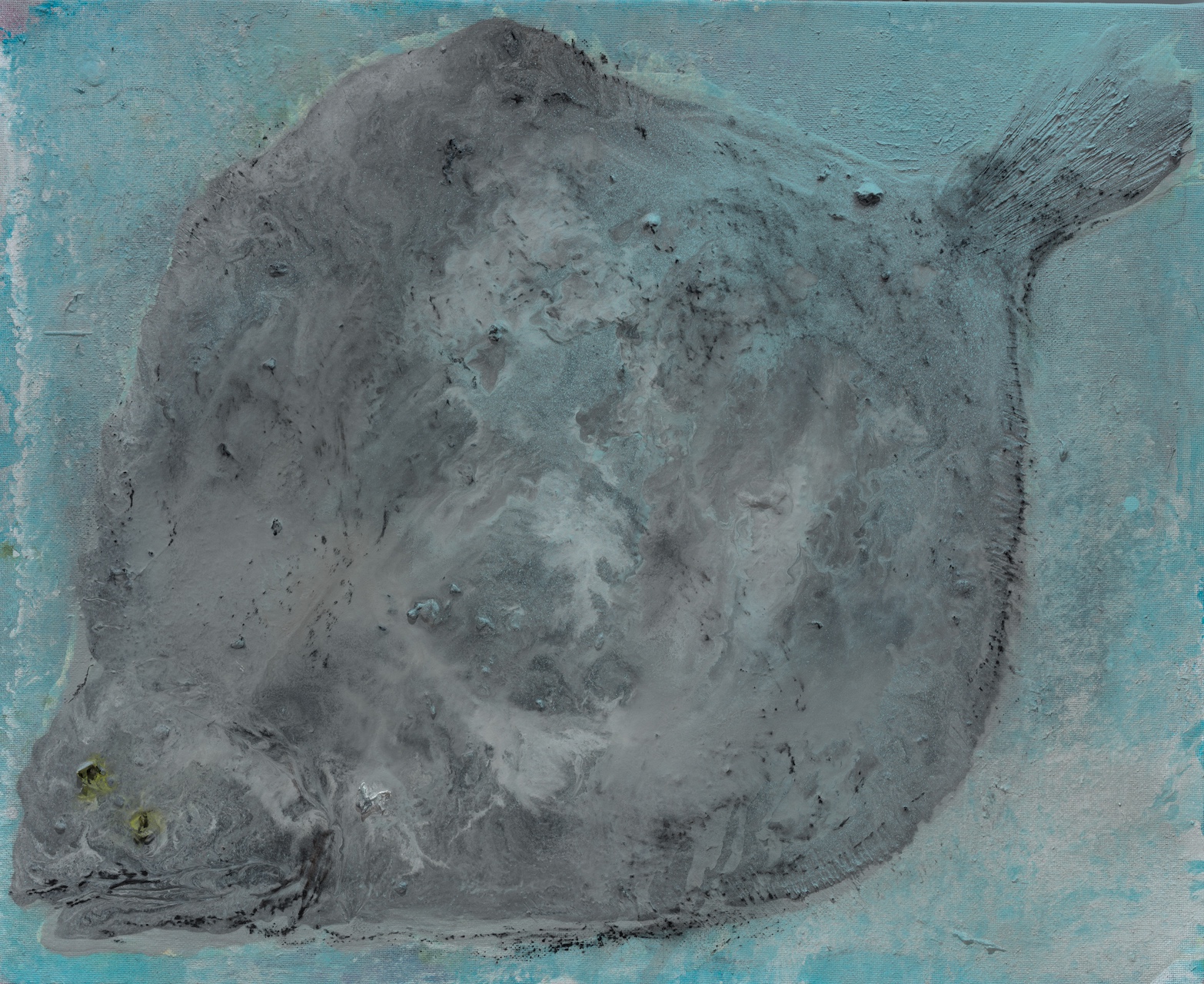News
Casa Batlló recovers the original appearance of the rear facade
The restoration reveals the black color devised by Gaudí and restores missing elements of the patio and balconies.
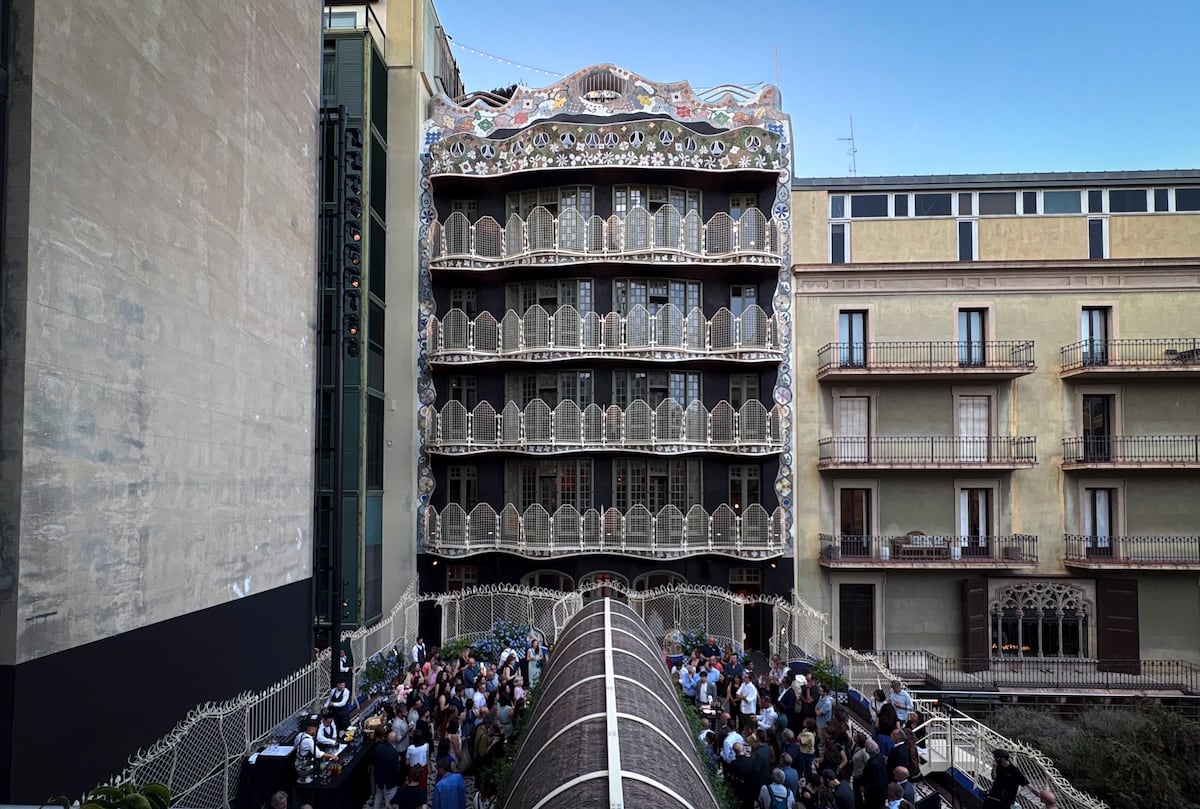
For many years, the back facade of Casa Batlló has been overshadowed by its imposing main facade facing Passeig de Gràcia. But now, this more discreet side of the building has shined again thanks to a restoration process that has allowed the original black color that Gaudí gave it to be recovered. This dark tone, which had been hidden for decades under a layer of cream paint, is once again showing itself after an intervention that has not only highlighted the aesthetics, but also the documentary rigor.
The project, led by architect Xavier Villanueva —linked to Casa Batlló for over twenty years— was the first to address this part of the building in a global way. According to Villanueva, “we have recovered an image of the façade, which, if not the one from 1906, is the closest”, adding that it has been carried out “with scientific criteria and thanks to an extensive documentary base”. Other original elements have also been restored, such as the iron scrollwork and the balcony grilles, which once again shine in leaden white, the original colour.
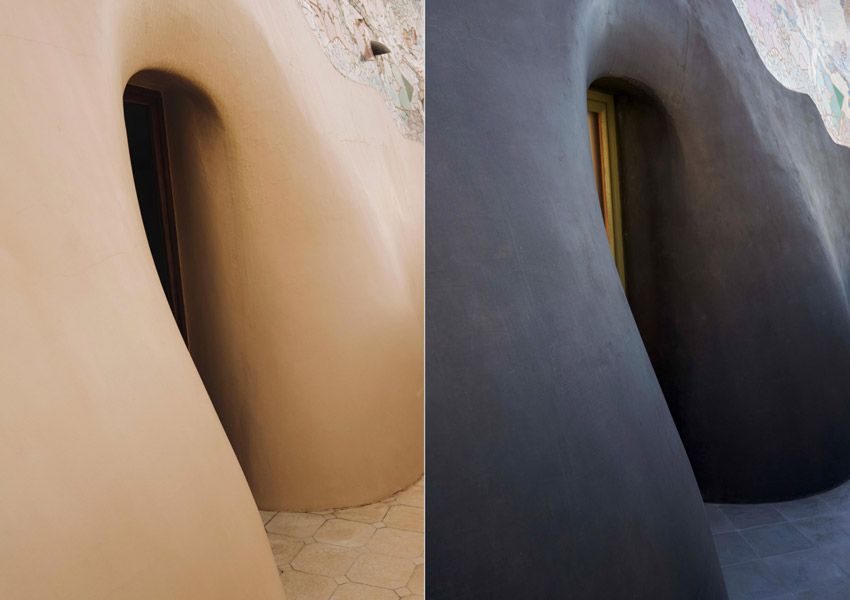 Abans i després de la restauració. © Casa Batlló
Abans i després de la restauració. © Casa Batlló
The work, which involved the participation of around forty technicians and specialists, had a budget of 3.5 million euros and lasted several months. During this time, the interventions that were carried out during the fifties and nineties, which focused more on repairs than on a faithful recovery, were eliminated. Work was also carried out on the patio of the Planta Noble, a space located next to the dining room, originally intended as a quiet refuge for the Batlló family. Planters and a heather pergola in the shape of a parabola have been re-placed here, elements that had been lost over time.
One of the most laborious details has been the restoration of the patio's pavement, made up of 85,000 pieces of Nolla mosaic, which has been redone following the artisanal techniques of the early 20th century. At the same time, the grilles, doors, walls and decorations made of trencadís and stucco have been restored. This is an action that culminates the most extensive restoration ever carried out at Casa Batlló. According to Villanueva, there is a subtle connection between this rear facade and the main one, beyond the apparent differences. "The colors and the reinterpretation or incorporation of nature into the architecture" are points of contact between both sides of the building. On the main one, water and movement predominate; on the other hand, on the rear one, the link with the plant world is more visible.
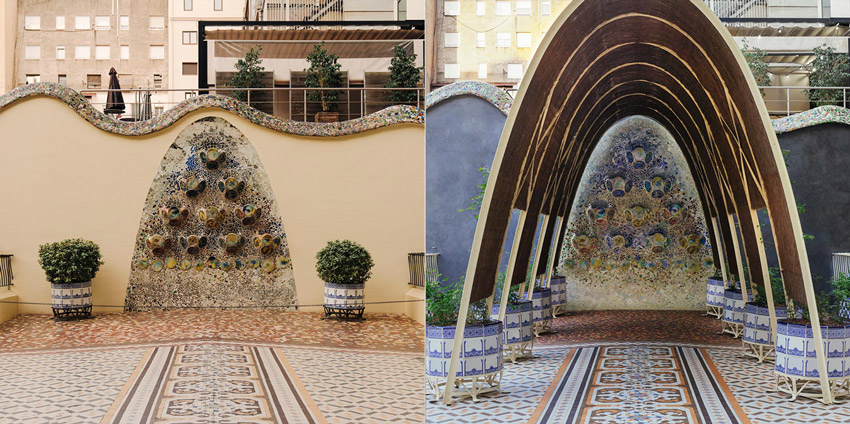 Abans i després de la restauració. © Casa Batlló
Abans i després de la restauració. © Casa Batlló
This project coincides with the 20th anniversary of the declaration of Casa Batlló as a World Heritage Site by UNESCO. The restoration has been carried out both in the building and in several artisan workshops, keeping the original spirit of the work alive but applying current tools, such as photogrammetry or 3D scanning, to ensure its accuracy. All in all, it is a discovery that, after more than a century, gives a new reading to one of Gaudí's most emblematic works.






